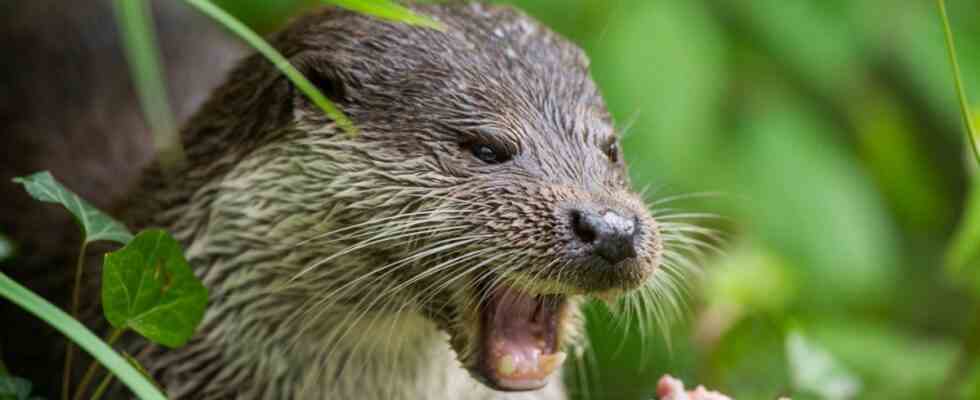About 30 years ago the otter was almost extinct in Bavaria. A few of the lightning-fast swimmers and persistent divers were only to be found on the rivers and streams in the Bavarian Forest. Meanwhile, Lutra lutra, as the scientific name of the strictly protected species is, is spreading again in the Free State. Especially in Lower Bavaria and the Upper Palatinate you can meet otters more often again. Of course, it was previously unclear exactly how many are now traveling in the two government districts. Now the State Institute for Agriculture (LfL) has had the current stock estimated for the first time. According to this, around 650 otters live in the Upper Palatinate and Lower Bavaria alone.
The numbers, which have so far only been circulating within the authorities, are explosive. Because the re-spreading of the otter in Bavaria is highly controversial. Especially the pond keepers consider the predators, which have a strong, stocky body and can grow up to 90 centimeters, as their enemies. Because otters also hunt frogs, snails and sometimes even ducks and seagulls. But mostly just fish. An otter eats up to 1.2 kilos of fresh fish a day. There are pond keepers who see their existence threatened because of the re-spreading of the voracious predators. They therefore demand that they be allowed to shoot an otter as soon as it attacks a fishpond.
The CSU and Free Voters have adopted the demand as their own. They want the strict protection of the animals, which belong to the martens, to be lowered. “We stand by our pond owners and will consistently accompany the further process of removing the otter,” says the CSU member of the state parliament and chairman of the pond cooperative in the Upper Palatinate, Alexander Flierl. “Removal” is the bureaucratic word for launch.
The stock estimate was made by Professor Steven Weiss and his colleague Tamara Schenekar. The two scientists conduct research at the University of Graz and have published several times on the re-spreading of the otter in Austria. For their study for the LfL, they evaluated data from several years of otter monitoring by the state institute, the state office for the environment, the state fisheries association and the Ministry of Agriculture. However, these were only so precise for Lower Bavaria and the Upper Palatinate that they were suitable for a scientific assessment.
The two scientists did not want to commit themselves to the rest of Bavaria. According to the study, the data from there would also make it possible to make an assessment. But they are so incomplete that an assessment based on them would immediately meet with criticism. However, if you extrapolate the values, you arrive at a total population of around a thousand otters in Bavaria. Annette Freibauer, who heads the Institute for Agroecology and Organic Farming at the LfL and is responsible for the otter there, and her employees want to have additional data collected this winter. A precise estimate of the total stock should then be available by the end of 2023.
Nevertheless, the pond keepers and the fishermen see their conviction confirmed “that the otter is no longer threatened with extinction in Bavaria,” according to a statement from the State Fishing Association (LfV). On the other hand, many fish species are endangered and in some cases threatened with extinction. It is “high time to allow the removal of otters,” says LfV President Albert Göttle. “All wild animals in Bavaria are worth the same.” There must be an end to “the excessive protection of symbolic animal species if this is foreseeable at the expense of other endangered animal species”.
The nature conservation associations will not accept a relaxation of the strict otter protection without objection. Only recently they sued successfully against a pilot project of the government of the Upper Palatinate for the shooting of otters. The Free State has now enforced an appeal against the judge’s verdict.

